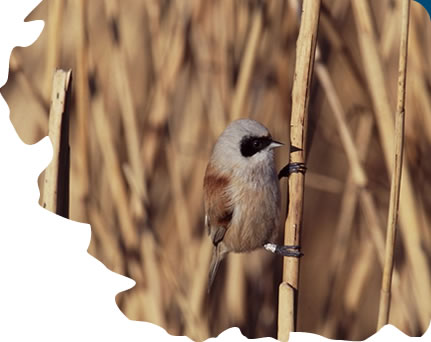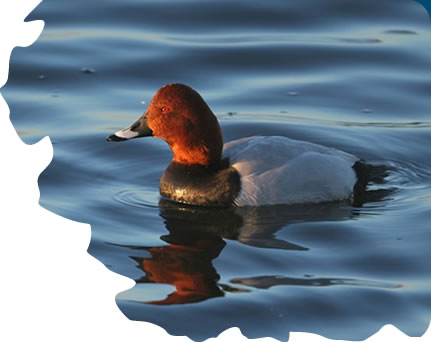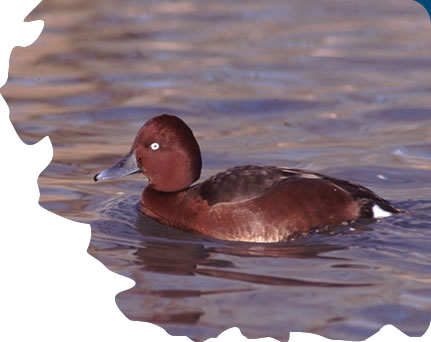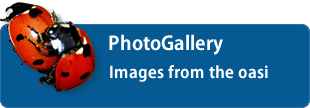Threats
The threats identified for the site correspond to some of those singled out by the strategy for the conservation of the Bittern, Ferruginous Duck, Slender-billed Curlew and Pygmy Cormorant for Italy, as recommended by their respective European Action Plans which constitute the first specific international documents for the conservation of these species. These threats make particular reference to the loss of suitable habitats for the target species.
The European Action Plans have been approved by the European Commission and the Bern Convention Permanent Committee recommend their implementation also through the establishment of national action plans (Recommendation no.75, 1999), in particular for the Ferruginous Duck and the Slender-billed Curlew. National Action Plans have already been prepared by the INFS (National Institute for Wild Fauna) for these species, while the recommendations foreseen by the international plan have been adopted for the Bittern.
Regarding the Pygmy Cormorant, even though there are no specific actions for Italy in its European Action Plan, it is clear that general threats such as the loss of suitable habitats are also true for the project site, particularly because of the recent colonization of the species, which had 1 breeding pair in 2006.
Threat 1
In the 1950s the edges of the current wetland underwent significant reclamation which brought about the transformation of the temporary Mediterranean marshes into agricultural land. As a result, the Lago Salso Oasis does not have any wetland buffer zones but just agricultural land next to its banks on the southern side.
Location: the southern perimeter of Lago Salso
Impact on biodiversity and the target species: the reclamation of these “ minor” marshes has caused the loss of a network of wetland areas. This is one of the main causes of the general impoverishment of biodiversity and at least one of the causes of the drastic decrease in target species, in particular through the loss of suitable environments for stopping over and overwintering of the Slender-billed Curlew and feeding and reproductive sites for the Pygmy Cormorant, Bittern and Ferruginous Duck.
LIFE+ project actions to mitigate the threat/ manage the threat: action C1- transformation of 90 hectares of agricultural terrain into an environment corresponding to “Mediterranean salt meadows” (cod 1410).
Threat 2
Filling in the marsh
The sediment load in the area where water enters the wetlands (Valle Alta and Valle di Mezzo) causes the deposition of solid suspended matter, the filling in of open water and the consequent invasive proliferation of vegetation. Marsh ecosystems are, by their very nature, environments in transition, whose associated vegetation tends naturally to evolve towards more terrestrial successions. This is due to the rapid growth of the vegetation which tends to invade water bodies following a rise in the pond floor caused by sediment deposition, thus reducing the area of the water body as a result of the great quantities of organic substances produced which are then transformed into substrate, thus filling in the flooded areas.
In a limited area (Salso Lake Oasis), where past reclamation carried out outside the marsh has brought about the transformation of natural areas into agricultural land, although of natural origins (sediment transported in the Cervaro torrent and in the Roncone canal which connects the river to Salso Lake), the deposit of sediments in the water basins risks jeopardising the entire ecosystem through a process of filling in, and thus altering the remaining marsh environments.
Location: ValleAlta and Valle di Mezzo in the Salso Lake Oasis. At least 10 hectares of the marsh environments (“ eutrophic lakes”) in the Oasis are already greatly influenced by the filling in process.
Impact on biodiversity and on the target species: the rise in pond floors and the closure of the stretches of open water and channels caused by the sediment deposits and the proliferation of vegetation, is leading to the loss of ecotones in the marshes (ponds), which are mostly used as feeding and reproductive sites by the Pygmy Cormorant, Bittern and Ferruginous Duck. It is bringing about anoxia of the marsh due to the lack of oxygen caused by the reduction in circulation.
A further negative consequence of the loss of ponds is the possible damage to wide areas of reed beds constituted by Phragmites australis and Typha spp. in the case of fire, given that it is a homogenous dense and relatively dry reedbed in late summer.
LIFE+ action to mitigate the threat/management of the threat:
Action C2- opening 10 ponds in the total marsh area of circa 10 hectares including the intercommunicating channels.
Action C3-construction of 5 islands of 50 m2 each.
The management of these problems to avoid the disappearance of the marsh points to the need for environmental restoration works. These can be limited to the removal of sediments and vegetation substrate, bringing about an increase in depth in the areas most at risk of filling in, which in the case of the Salso Lake Oasis, are the Valle Alta and Valle di Mezzo where the sediments transported into the marsh are deposited.
These are extraordinary works whose benefits to the marsh will be quantifiable over a period of 50 years, given that the actual ecological situation of the Salso Lago Oasis, and in particular, that of Valle Alta and Valle di Mezzo have evolved from an initial situation which derived from works to embank them and the creation of the current basin perimeter which occurred between 1950 and 1960.
Threat 3
Variations in the water level
The water supply to the Salso Lake Oasis wetlands is related to the seasonal levels of the Cervaro torrent, from which water enters through a canal of artificial origins (the Roncone del Cervaro canal). The influx is regulated by sluices which are currently maneuvered without following any particular management model for lake water levels. The lack of knowledge on the magnitude of water flows does not permit optimal water management of the wetlands when there are sudden floods and in delicate periods such as the bird breeding season often resulting in abrupt variations in the levels.
Location: Lagos Salso Oasis wetlands.
Impact on the biodiversity of the target species: the absence of studies on the possible models for maneuvering the sluices and the unprogrammed control of water flows have led to erroneous decisions regarding the use of the sluices in the past, causing abrupt rises and falls in the marsh water levels with the consequent flooding of the nests of many species including the Bittern and the Ferruginous Duck. In the same way, the abrupt reduction in water levels has favoured the predation of nests with consequent damage to the reproductive success of the above mentioned species. In addition, this situation is a cause of stress for the entire ecosystem, particularly for vegetation when a sudden rise in water levels takes place in spring.
LIFE+ project actions to mitigate the threat/ management of the threat:
Action A4-scientific report on the vital minimum water levels, optimal management of the local water resources.
Action C3. Construction of 5 islands of 50 m2 each.
Threat 4
Lack of knowledge on the biology of the Ferruginous Duck
Although this is not a direct threat or threat factor, as has been identified in the National Action Plan prepared by the INFS (point 2.3.10 lack of knowledge on the biology of the species, p.28), the lack of information on the salient aspects of species biology and ecology is a serious limitation to the management and restoration of the habitat and, therefore, to the implementation of effective conservation actions. In fact, it is often the negative factors which are known but not the causes (e.g., high juvenile mortality).
In particular, the lack of knowledge regards:
1) Productivity
2) Survival
3) Ecological characteristics determining the choice of stopping over, overwintering and reproductive sites of the species.
Location: Salso Lake Oasis
Impact on the biodiversity of the target species: the scarce knowledge at the national level on the vital needs of the species hinders the identification of further factors which penalise reproductive success.
LIFE+ actions to mitigate the threat/ management of the threat:
Action A2- Studies of the habitats which are the target of the concrete conservation actions
Action A3- Preliminary study on the threatened priority species
Action E1- Monitoring the target species
Action E2. Water Monitoring



| EVENTS CALENDAR | ||||||
| «SETTEMBRE 2021» | ||||||
| L | M | M | G | V | S | D |
| 1 | 2 | 3 | 4 | 5 | ||
| 6 | 7 | 8 | 9 | 10 | 11 | 12 |
| 13 | 14 | 15 | 16 | 17 | 18 | 19 |
| 20 | 21 | 22 | 23 | 24 | 25 | 26 |
| 27 | 28 | 29 | 30 | |||
-
12 settembre 2018
Rinvenuta una Lontra investita -
2 giugno 2018
L┤Ibis eremita al Lago Salso -
7 febbraio 2018
Giornate Mondiali Ramsar 2018
The LIFE+ Nature and Biodiversity 2007 project –“Conservation activities for priority avifauna in the Lago Salso Oasis” is structured according to 4 series of actions:
1 Preparatory actions
2 Concrete conservation actions
3 Awareness raising and communication actions
4 Monitoring actions











